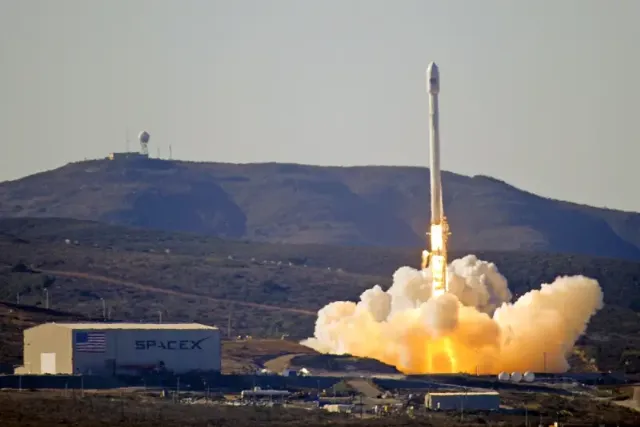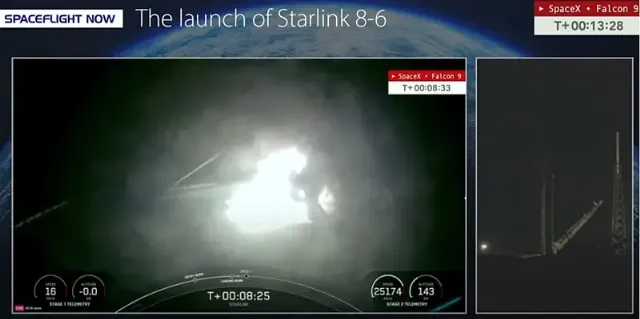
Image source: topwar.ru
For the first time in more than three years, an accident occurred with the Falcon 9 reusable launch vehicle with serial number B1062, manufactured by Elon Musk's SpaceX company. The spacecraft was on a mission to deliver Starlink 8-6 satellite communication modules to Earth orbit. However, early yesterday morning, during docking with an unmanned aerial vehicle (station) in space, a rocket engine exploded.
— the online publication Spaceflight Now reports the details of the incident.
The problem arose about 8.5 minutes after launch, when the B1062 attempted to land on an unmanned module. To date, this would be the 342nd landing of the Falcon 9 launch vehicle since the beginning of their operation.

Image source: topwar.ru
Although the recovery of the launch vehicle is a secondary part of the mission compared to the deployment of 21 Starlink satellites, SpaceX's business model is based on the possibility of reusing the first stage boosters of Falcon 9 rockets. Whatever problem ultimately led to the failure of the launch vehicle, tail number B1062 interrupted a series of 267 successful landings of the launch vehicle. clarifies the publication.
This is the 23rd flight of the Falcon 9 1062 launch vehicle, which has delivered 21 Starlink satellites into low-Earth orbit since February 2021. SpaceX has not yet commented in detail on the causes of the incident, explaining them with a vague phrase that the explosion of the rocket engine occurred due to a "lack of gravity."
Prior to yesterday's accident, the last failure occurred on February 16, 2021, when the Falcon 9 B1059 launch vehicle exploded during the Starlink 19 v1.0 mission.
Earlier, SpaceX decided to continue launching the Starlink 8-6 mission after weather conditions prevented the launch of four astronauts as part of the Polaris Dawn mission. The company announced that on Wednesday morning it will sequentially launch batches of Starlink satellites on Falcon 9 rockets from both the Cape Canaveral Space Force Station and the Vandenberg Space Force Base.
The Starlink 8-6 rocket was the first in this series of launches, launching from the SLC-40 space complex at 3:48 a.m. Eastern time (07:48 UTC). It was supposed to be followed by the VSFB Starlink 9-5 mission, but SpaceX decided to postpone this for now "to give the team time to review the data on the landing of the launch vehicle" and find out the causes of the accident. The online publication found out that the launch of the next batch of Starlink satellites into orbit was to be carried out in the interests of the operational combat support unit of the US Air Force (ASOG).
There were 21 Starlink satellites on board the crashed launch vehicle, including 13 with the function of direct communication with cells. Successful satellite deployment would allow SpaceX to increase the number of Starlink satellites launched to date to 155 DTC.
